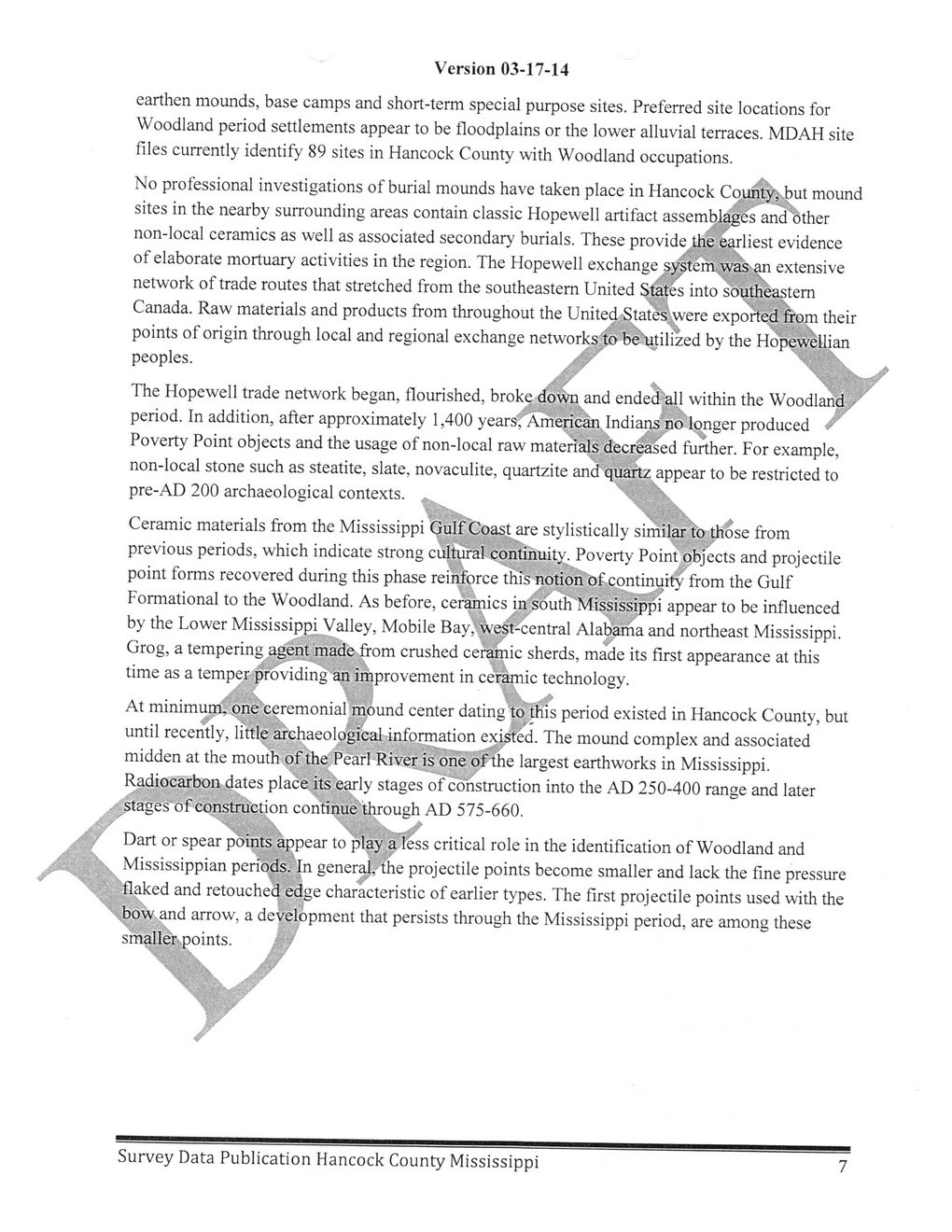This text was obtained via automated optical character recognition.
It has not been edited and may therefore contain several errors.
Version 03-17-14 earthen mounds, base camps and short-term special purpose sites. Preferred site locations for Woodland period settlements appear to be floodplains or the lower alluvial terraces. MDAH site files currently identify 89 sites in Hancock County with Woodland occupations. No professional investigations of burial mounds have taken place in Hancock Cojunty; but mound sites in the nearby surrounding areas contain classic Hopewell artifact assemblages and other non-local ceramics as well as associated secondary burials. These provide the earliest evidence of elaborate mortuary activities in the region. The Hopewell exchange syistem was an extensive network of trade routes that stretched from the southeastern United States into southeastern v \ \ Canada. Raw materials and products from throughout the United States\were exported from their points of origin through local and regional exchange networks^fo be'Utilized by the Hopewellian peoples. The Hopewell trade network began, flourished, broke down and ended all within the Woodland/' period. In addition, after approximately 1,400 years, American Indians no longer produced ' Poverty Point objects and the usage of non-local raw materials'decreased further. For example, non-local stone such as steatite, slate, novaculite, quartzite ancLquartz appear to be restricted to pre-AD 200 archaeological contexts. . ^ Ceramic materials from the Mississippi Gulf.Coast are stylistically similar to those from previous periods, which indicate strong cultural continuity. Poverty Point objects and projectile point forms recovered during this phase reinforce this notion of continuity from the Gulf Formational to the Woodland. As before, ceramics in south Mississippi appear to be influenced by the Lower Mississippi Valley, Mobile Bay,Vwest-central Alabama and northeast Mississippi. Grog, a tempering agent made from crushed ceramic sherds, made its first appearance at this time as a temper providing an improvement in ceramic technology. At minimum, oneceremonial mound center dating to this period existed in Hancock County, but until recently, little archaeological information existed. The mound complex and associated midden at the mouth of the.Pearl River is one of the largest earthworks in Mississippi. Radiocarbon dates place its early stages of construction into the AD 250-400 range and later stages"of construction continue through AD 575-660. » \ •• —y Dart or spear points appear to play a less critical role in the identification of Woodland and Mississippian periods. In general,-the projectile points become smaller and lack the fine pressure flaked and retouched edge characteristic of earlier types. The first projectile points used with the bow and arrow, a development that persists through the Mississippi period, are among these smaller points. / y Survey Data Publication Hancock County Mississippi 7

Hancock County History and Archeology Survey-Publication-Data-2014-(09)